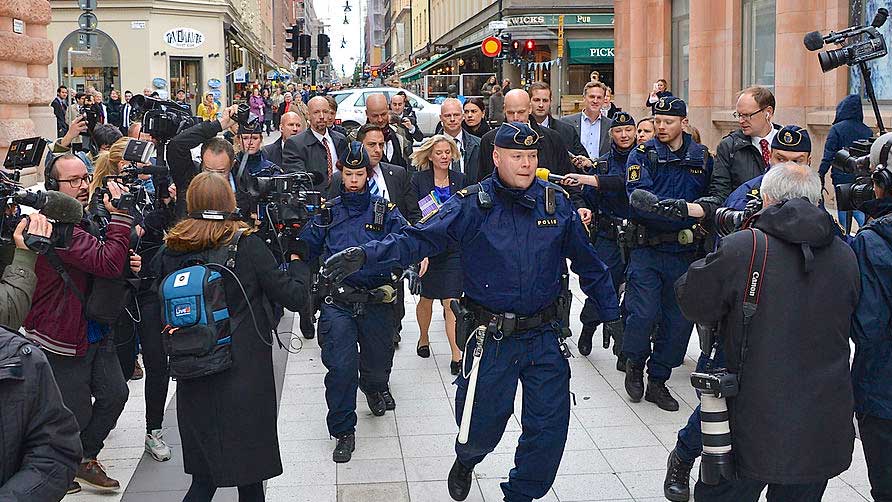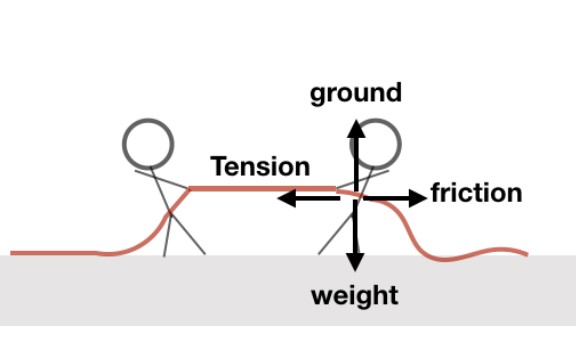
source: Etuna news https://tinyurl.com/54zuc8hw
November 8th is Budget Day! For those who are interested in all things political, this is exciting – but it’s also kind of a spectacle. The 400 meter long Budget Walk, or budgetpromenaden, is its own Wikipedia entry. It’s that good.
The stack of A4 paper that the budget is written on, wrapped up in a blue and yellow ribbon and carried by the Minister of Finance while being mobbed by journalists and tv cameras, is actually the representation of a government’s idea for the country. The budget is a tool the government has to make its political ideas real – it shows how much money the government is planning to spend on the 27 different expenditure areas it comprises. These areas are, for example, items like financial support for students, industry and trade, energy, the EU, and financial security for the elderly. What items’ budgets get changed will reflect how the government realizes its priorities.
The budget’s Top Three
The largest government outlay in Sweden always goes to the local, municipal governments. Most of this amount falls under the Swedish equalization principle. This effort guarantees local governments an equal financial ability to provide services to their inhabitants – regardless of tax base, population size, or other structural difference. To further income equality, for example, the richest fifteen municipalities pay a percentage of their local tax income to the government. That amount is then distributed to the remaining 275 other municipalities.
”Health care, medical care and social services” is the second largest outlay in the budget, and ”financial security for those with illnesses and disabilities” is third. The full list can be seen on the government.se website here.
The majority of the allocations to the different expenditure areas don’t change more than incrementally. Most of the budget is basic services, which are not that controversial. However, there are a few budget items that may change significantly this year – the defense, international development cooperation, and police budgets.
Guns and roads
Currently, the defense budget is around 71 billion kronor, which is about the same amount budgeted for communications (roads and trains and the like). By 2025, the defense budget is expected to go up 55 percent, to 110 billion kronor. The government has said it hopes to get Swedish defense spending up to 2% of GDP (meeting Nato expectations) by 2026. With prices skyrocketing, though, who knows how much materiel this will actually buy.
The amount budgeted for International development and humanitarian aid will go in the opposite direction. Instead of 1% of GDP, the government has flagged for a figure around 0.88% of GDP. Sweden’s aid competitor Norway also just abandoned the 1% of GDP goal for a 0.75% goal. With Russia out of the picture, however, Norway has been raking in money hand over fist by supplying oil to the world: Its 0.75% will be a huge amount. Sweden’s 0.88% will still remain a world-leading number, though.
Finally, the Minister of Justice Gunnar Strömmer announced that the police will receive a bigger allowance, a raise of 1.4 billion kronor. In budget terms, though, this is again somewhat of an incremental increase.
But we thought you were going to help
What happens with election promises is still a question. Perhaps most memorable were the promises regarding help with coming electricity bills and cheap gas prices, particularly diesel. These supports would likely come out of the budget surplus, which is thought to be around 30 billion. With the dismal economic forecast, though, including raging inflation, the government will have to be careful if it’s going to help, and not hurt. Besides, that ten kronor per litre gas price was a flag that SD flew, and they’re not officially in the government.
The budget walk on November 8th will no doubt be televised per usual, and there will be a lot of people swarming around the Minister of Finance. But the real attention will be on that beribboned stack of paper she’ll be holding.


